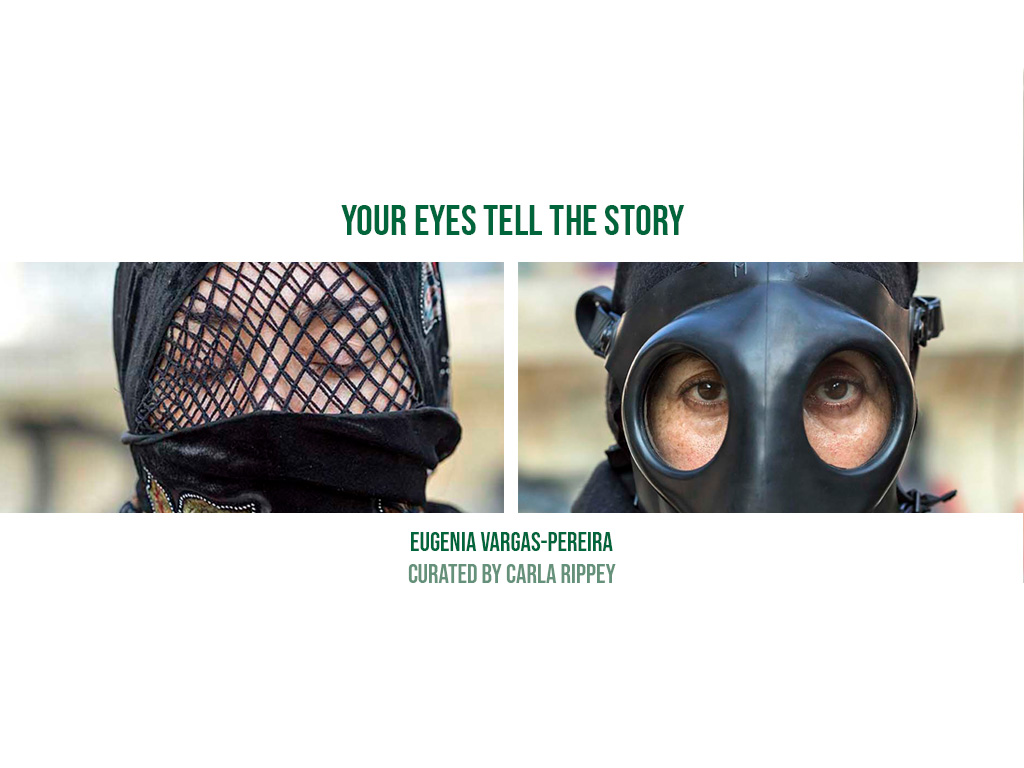 |
|
|
Your Eyes Tell the Story |
|
Tus ojos cuentan la historia (Your Eyes Tell the Story) is a series of photographic portraits of women clad in diverse styles of masks, bursting into spaces of conflict that are usually chaotic and reserved for men. This project is an inquiry into the masked females, particularly the way that Chilean feminists appropriated the capucha as their insignia of personal creative expression and self-defense.
|
In the portraits, we can also appreciate an older generation of women, who were lucky to have survived as young adults the brutal dictatorship of the 70s and 80s. In 2019 and 2020, they are active once again in the protests, in support of their daughters and granddaughters. |
|
During the Chilean Spring of 2019, thousands of women of all ages respond furiously to this new legislation and begin gathering every Friday evening to protest--amidst tear gas--in the Plaza de la Dignidad (formerly Plaza Baquedano). Wearing amazing masks that employ a variety of shiny and colorful fabrics, many prefer to use with stretchy materials for a better fit. They elaborate beautiful capuchas, balaclava style (1) embellished with intricate embroidery, pearls, feathers, and chains. In some cases, the women are members of artists’ collectives that produce their own garments, without claiming credit for the authorship of the designs. The final results are stunning masks that resemble and or reference various cultures and influences around the world. (1) A balaclava, also known as a ski mask, is a form of cloth headgear designed to expose only part of the face, usually the eyes and mouth. |
performances and acts of solidarity with workers, pensioners, and teachers. Tus ojos cuentan la historia series, 2019/2020 |
 |
 |
 |
 |
 |
 |
 |
 |
 |
 |
 |
 |
 |
 |
 |
 |
 |
 |
 |
 |
 |
 |
 |
 |
 |
 |
 |
 |
 |
 |
 |
 |
 |
 |
 |
 |
 |
 |
 |
 |
 |
 |
 |
 |
Eugenia Vargas-Pereira born in Chillán, Chile, is a multidisciplinary artist known for her photography, time-based installations and performances, based in Santiago, Chile and Tucson, USA. Her work has been exhibited in venues such as Bienal 12, Porto Alegre, Brasil 20/20, Radical Women, The Hammer Museum, PST/LA/LA, USA, 2017; The LA Art Show 2017; We The People, Casablanca Biennale, Mezquita Hassan, Morocco, 2016; Limitrofe, The XX Bienal de Santa Cruz de la Sierra, Bolivia, 2016. In 2003, she represented her country Chile at the 50th Venice Biennale, Dreams and Conflicts and invited Santiago’s Plaza de Armas stenopeic photographer Luis Maldonado to transport his street portrait studio and camera to the Giudecca Island. In 2011, her film Girls and Horses was featured in the exhibition Silence of The Beast, Centre Pompidou, Paris. In Miami, in 2000, she founded a low frequency radio, Talking Head Transmitters (THT) airing on FM to build a bridge between artists and community. THT has transmitted from Muzeum in Anaheim Ca, as part of PST/LA/LA; The LA Art Show; We The People, The Casablanca Biennale; New Works Miami Art Museum; the Museum Quartier in Vienna, Austria, Vienna Art Week; Intrude, Zendai Moma, Shanghai, China, among others. |
|
Carla Rippey Is an American-born visual artist (Kansas, 1950) based in Mexico City. Her work seeks to expand the margins of drawing and graphics applying strategies of appropriation, selection and edition. |